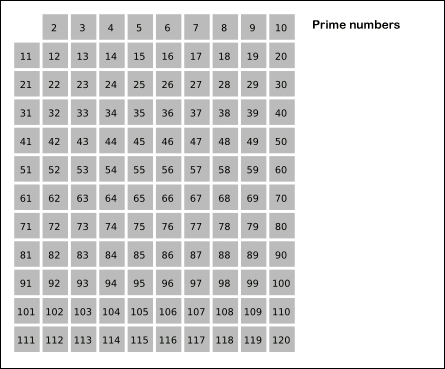 | ||
Leonhard Euler proved the Euler product formula for the Riemann zeta function in his thesis Variae observationes circa series infinitas (Various Observations about Infinite Series), published by St Petersburg Academy in 1737.
Contents
The Euler product formula
The Euler product formula for the Riemann zeta function reads
where the left hand side equals the Riemann zeta function:
and the product on the right hand side extends over all prime numbers p:
Proof of the Euler product formula
This sketch of a proof only makes use of simple algebra. This was originally the method by which Euler discovered the formula. There is a certain sieving property that we can use to our advantage:
Subtracting the second equation from the first we remove all elements that have a factor of 2:
Repeating for the next term:
Subtracting again we get:
where all elements having a factor of 3 or 2 (or both) are removed.
It can be seen that the right side is being sieved. Repeating infinitely for
Dividing both sides by everything but the ζ(s) we obtain:
This can be written more concisely as an infinite product over all primes p:
To make this proof rigorous, we need only to observe that when
The case s = 1 {\displaystyle s=1}
An interesting result can be found for ζ(1), the harmonic series:
which can also be written as,
which is,
as,
thus,
We know that the left-hand side of the equation diverges to infinity, therefore the numerator on the right-hand side (the primorial) must also be infinite for divergence. This proves that there are infinitely many prime numbers.
Another proof
Each factor (for a given prime p) in the product above can be expanded to a geometric series consisting of the reciprocal of p raised to multiples of s, as follows
When
where σ is the real part of s. By the fundamental theorem of arithmetic, the partial product when expanded out gives a sum consisting of those terms n−s where n is a product of primes less than or equal to q. The inequality results from the fact that therefore only integers larger than q can fail to appear in this expanded out partial product. Since the difference between the partial product and ζ(s) goes to zero when σ > 1, we have convergence in this region.
